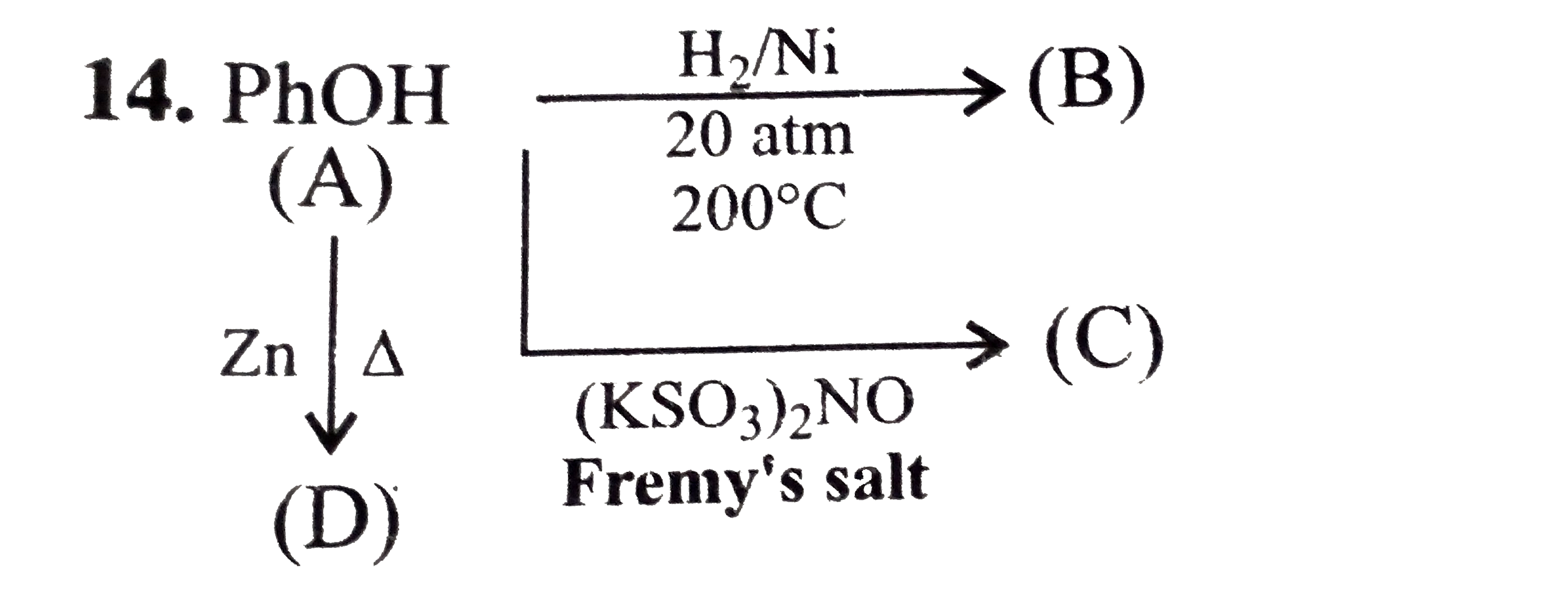
The compound (B) is :
Et−N∣Pr−CH=O
Et−N=Ch−Br
Et−H∣N−OH∣CH−Pr
Et−H∣N−O∣∣C−Pr
The correct Answer is:B
(b) In an isocyanide, first an electrophile and then a nucleophile is added at the same C atom of (−⊕N≡ӨC) group to form a species which usually undergoes further transformations.
 .
.
Topper's Solved these Questions
- GRIGNARD REAGENTS AND ORGANOMETALLIC REAGENTSBOOK - CENGAGE CHEMISTRYCHAPTER - GRIGNARD REAGENTS AND ORGANOMETALLIC REAGENTSEXERCISE - Exercises (Multiple Correct)
16 Videos
- GRIGNARD REAGENTS AND ORGANOMETALLIC REAGENTSBOOK - CENGAGE CHEMISTRYCHAPTER - GRIGNARD REAGENTS AND ORGANOMETALLIC REAGENTSEXERCISE - Exercises (Single Correct)
47 Videos
- GRIGNARD REAGENTS AND ORGANOMETALLIC REAGENTSBOOK - CENGAGE CHEMISTRYCHAPTER - GRIGNARD REAGENTS AND ORGANOMETALLIC REAGENTSEXERCISE - Exercises (Subjective )
17 Videos
- GENERAL PRINCIPLES AND PROCESS OF ISOLATION OF ELEMENTSBOOK - CENGAGE CHEMISTRYCHAPTER - GENERAL PRINCIPLES AND PROCESS OF ISOLATION OF ELEMENTSEXERCISE - Archives (Subjective)
14 Videos
- NCERT BASED EXERCISEBOOK - CENGAGE CHEMISTRYCHAPTER - NCERT BASED EXERCISEEXERCISE - Nuclear Chemistry (NCERT Exercise)
29 Videos
Similar Questions

Q. Hybridization of B in compound (B) is
View SolutionA nitraite on acid hydrolysis gives compound A, which reacts with thionyl chloride to give compound B. Benzene reacts with compound B in presence of anhydrous AlCl3 to give compound C. The compound B reacts with ethyl alcohol to give ester D. Identify the compounds A,B C and D and write the equations.
View Solution
Knowledge Check
The compound (A) in the previous question is further hydrolysed in dilute acidic medium to give compounds (B) and (C). The compounds (B) and (C) are :
APhNH2 and PhCH=OBPhCH2NH2 and PhCH=OCPhNH2 and PhCH2CH=ODPhCH2NH2 and PhCH2CH=O.A compound (A) is formed by the reaction of ethylene with bromine which on reacting with aqueous KOH gives a compound (B). The compound (B) can also be prepared by the reaction of ethylene with the following:
ABaeyer’s reagentBOxygen in the presence of silver catalyst and then acidic hydrolysisCperformic acid and the product undergoes acidic hydrolysisDAll of the above
which statement is wrong about the compound (B) ?A(B) is obtained form (A) by acylation of actived ring at para-position to one of the (OH) groups.B(B) is obtained form (A) by esterification of one of the (OH) groups.C(B) is obtained form (A) by alkylaiton in the actived ring at para-position to one of (OH) groups.D(B) is obtained form (A) by esterification of both (OH) groups.

The compound (B) and (C ), respectively, are:
View Solution
The compounds (B) and (C ), respectively, are:
View Solution(i)

(ii)
Compound(B)is:
View Solution
The compounds (B), (C ), (D), respectively are:
View SolutionCompound 'A' of molecula formula C4H10O on treatment with Lucas reagent at room temperature gives compound 'B'. When compound 'B' is heated with alcoholic KOH, it gives isobutene. Compound 'A' annd 'B' are respectively
View Solution
